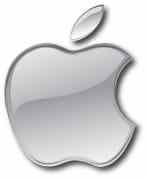MacOS - External hard drives

Upon purchasing a new external hard drive or transition from the PC to the Mac, you can be confronted with various problems. These problems usually arise from the file system being used. Fortunately you can change the file system of your hard drive at any moment. You can use the HFS+ or the MacOS extended format (default to most Macs).
Compatibility with Mac OS: All versions Mac OS supported (as from Mac OS 8).
Compatibility with Windows: A utility is required access drives formatted in HFS+ or MacOS extended format. MacDrive. Macdisk.
One of the recurrent problems encountered by people switching from PC to Mac, is due to external hard drives formatted in NTFS. Your disk is in read-only mode, you can read the files, but won't be able to Edit/Rename them or create new files. One solution is to instruct your Mac to write on NTFS.
This solution allows you keep the compatibility of your external drives with Windows OS.
Several solutions exist depending on the version of MacOS version used:
This format primarily used for USB keys and some multimedia drives.
It has the advantage of being natively compatible with Mac OS and Windows, but however the file size is limited to 4 GB.
FAT32 is referred as "MS-DOS (FAT)" in the Disk Utility tool of Mac OS.
The exFat format has the advantage of being compatible with recent versions of Mac OS and Windows, but without limitation of size of files unlike the FAT32 (MS DOS). However, it is incompatible with some multimedia drives.
Compatibility with Windows: as from the Windows XP SP3.
Compatibility for MacOS: as from MacOS 10.6.5
Known as "ExFAT" in the Disk Utility tool of Mac OS.
Concerning multimedia drives:
Some work require FAT32 to work in multimedia mode (formatting them may result in the lost of the multimedia features).
Others work may work in NTFS and HFS+ format.
Before any formatting, it is important to backup your files, including the autorun.inf file.
file. All the information are usually present in the manual for your multimedia drive.
You can make use the built-in feature of Mac OS disk utility to format your external hard drive.
Note that: this action will overwrite all the informaton stored on the hard disk.
Go to Applications > Utilities > Disk Utility.
Select the icon of the physical hard disk - This icon is labelled with the name of the manufacturer and indicates its capacity.
Click the partition tab in the right part of the window.
Select 1 partition or more, if necessary.
Click on Options. There several choices are available:
For a Intel-based Mac - GUID partition table
For PowerPC Mac - Apple Partition Map
Master boot record (MBR) for dual use on MacOS and Windows
Click OK to confirm the choice. Then back in the main window, choose the desired format: Mac OS extended MS-DOS(FAT) NTFS
Give a title to this volume and click on Apply.
Thanks to Sanspseudo for this tip.